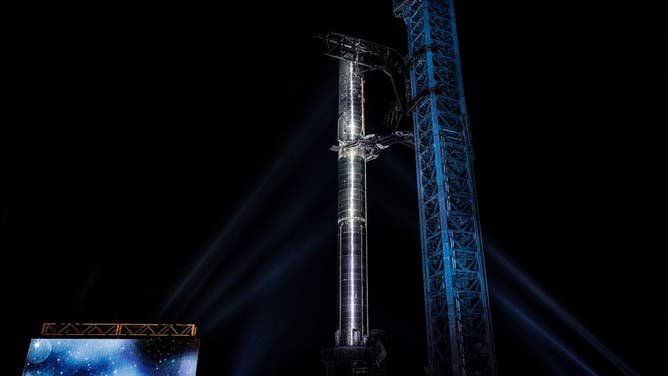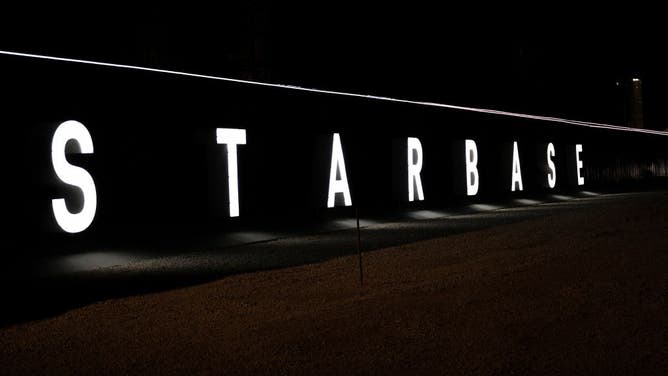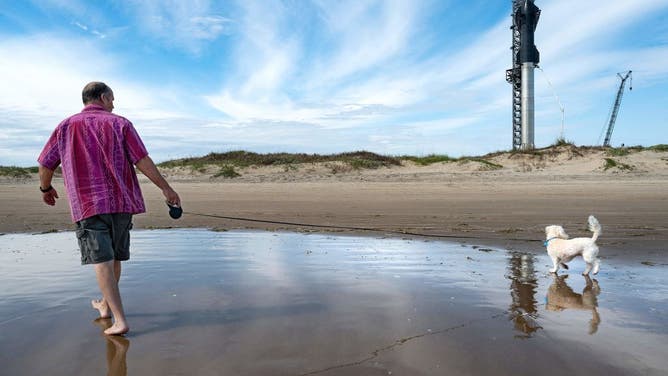Elon Musk says Starship will make it to orbit this year but will it launch from Florida or Texas?
Musk provided an update on Starship progress from Starbase, Texas this week. Here's what we learned.
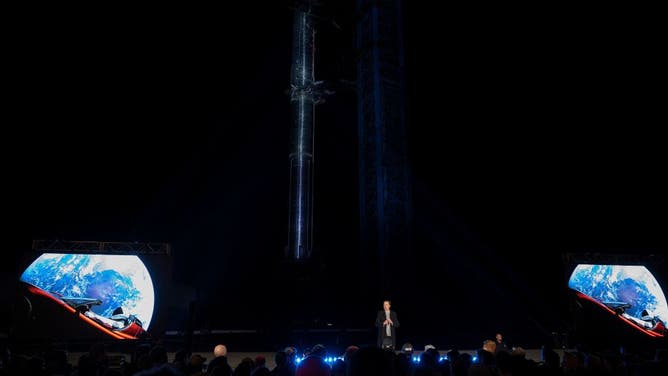
Elon Musk speaks during a press conference at SpaceX's Starbase facility near Boca Chica Village in South Texas on February 10, 2022. (Photo by JIM WATSON/AFP via Getty Images)
(Getty Images)
BOCA CHICA, Texas – SpaceX founder Elon Musk gave space fans what they've been asking for on Thursday, an update on Starship and insight into the near future for the massive reusable spaceship.
The anticipated talk was delivered while the billionaire CEO stood in front of the nearly 400-feet-tall fully stacked Starship and Super Heavy booster – a dramatic sight straight out of science fiction.
"This is really some wild stuff here. In fact, I mean, it's hard to believe it's real, except, you know, it's right there," Musk said, gesturing to the massive launch tower behind him illuminated by lights.
7 STELLAR ACHIEVEMENTS IN SPACEFLIGHT FROM 2021 WORTH CELEBRATING
Over 13 months, engineers built the launch tower in Boca Chica, Texas – home to SpaceX's Starbase, where teams have been developing and testing Starship. Musk equated the launch system to "as complex and difficult as either the booster or the ship," saying it requires a lot of "hardcore engineering."
In May 2021, the Starship prototype known as SN15 successfully flew to about 6 miles above Texas then made a controlled return, landing back at the launch site. It was the first landing for Starship that didn't end in a giant fireball. Before SN15, SpaceX conducted similar tests with prototypes SN11, SN10, SN9 and SN8. All of those tests ended in spectacular explosions when the spaceships crash-landed.
Waiting on FAA approval to reach orbit
The next major step for Starship is reaching orbit but if that happens with a launch from Texas or Florida depends on environmental and commercial space regulations.
SpaceX is currently waiting on the FAA to issue its final Programmatic Environmental Assessment (PEA) for the Starship project in Boca Chica, which would allow SpaceX to move forward with orbital test flights. However, that is only one piece of the FAA approval. SpaceX also needs to meet FAA safety, risk and financial responsibility requirements.
An FAA spokesman said in December the decision could be made by the end of February. More than 18,000 public comments were received under the draft PEA, which SpaceX was required to respond to.
A WHOLE BUNCH OF AMERICAN-MADE ROBOTS ARE HEADED TO THE MOON
"We don't have a ton of insight into where things stand with the FAA. We have gotten sort of a rough indication that there may be an approval in March, but that's all we know," Musk said Thursday.
However, the CEO also addressed the possibility the FAA might ask for more, including an Environmental Impact Statement (EIS), which could further delay the orbital test.
"It would obviously set us back for quite some time because an EIS takes a lot longer than a PEA," Musk said. "We would have to shift our priorities to Cape Kennedy."
Still, the billionaire was confident Starship would reach orbit this year.
If Starbase isn't Starship's home and launch site, Musk said it could take six to eight months to construct a launch tower at Kennedy Space Center launchpad 39A to support the vehicle.
SpaceX regularly launches its Falcon 9 with Crew and Cargo Dragon spacecraft from the Florida facility. Musk said that the Texas site would then be devoted to research and development for the project.
When it begins launching and landing regularly Florida will still be Starship's primary home base. SpaceX is already building a Starship production facility near Cape Canaveral and a launch site at Launchpad 39A.
Starship to return humans to the moon
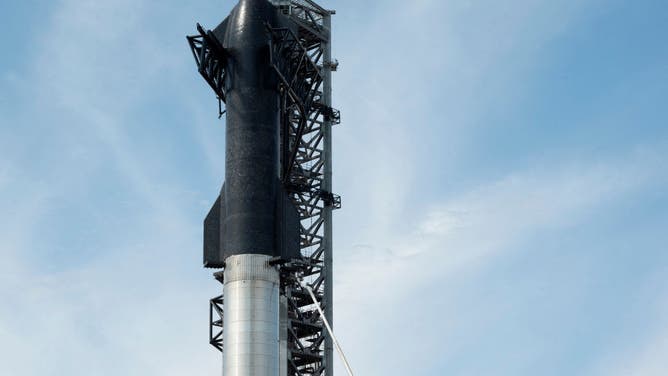
SpaceX's first orbital Starship SN20 is stacked atop its massive Super Heavy Booster 4 at the company's Starbase facility near Boca Chica Village in South Texas on February 10, 2022. (Photo by JIM WATSON/AFP via Getty Images)
(Getty Images)
Starship was designed for deep space exploration to the moon, Mars and beyond. The spaceship and booster are reusable and can fly on multiple missions carrying 100 metric tons to Earth orbit.
SpaceX has a lot riding on Starship as it was selected by NASA to return humans to the moon by 2025. Musk was confident SpaceX teams can make it happen.
"We're incredibly honored to that that NASA's selected Starship to take astronauts back to the moon for the first time in half a century, which is kind of mind-blowing," Musk said. "I'd just like to say, SpaceX is just deeply honored and appreciative that NASA would choose us for this incredibly important mission. And we'll get it done."
'WE GO WHERE THE STORMS ARE': NASA PILOTS FLY INTO SNOWSTORMS TO STUDY SNOWFALL
Starship will also be used to continue to grow SpaceX's Starlink internet constellation. The company has already launched nearly 2,000 satellites to orbit that provide internet to more than a dozen countries in the early stages of the broadband network. SpaceX's workhorse rocket Falcon 9, has been launching Starlink satellites more than 40 at a time. Starship could more than double the constellation in a few launches.
Musk provided some engineering updates on the overall vehicle and the Raptor engines that power Starship and the booster.
Musk said the final Super Heavy booster design would have 33 Raptor engines; this is up from the current prototype design, which had 29. Raptor 1 produced 185 tons of thrust. Musk said the newer version, Raptor 2, is producing 230 pounds, and he thinks that will eventually increase to 250.
All of this is to achieve Musk's goal of creating a self-sustaining city on Mars and taking the human species beyond our solar system.
"Eventually, the Sun will expand and destroy all life. So for those who really care about, not just the humans, but all the life on Earth, it is very important, essential that over the long term, we become a multi-planet species and ultimately even go beyond the Solar System and bring life with us."
